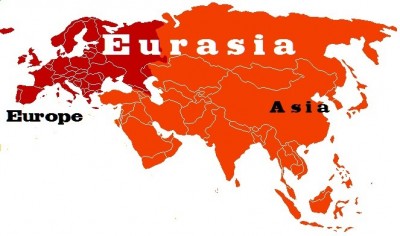From the Shanghai Cooperation Organization (SCO) Summit to the G20: United Eurasia Stands, Divided It Falls?
The SCO Summit will see Russia, India, and China make a pretense of unity in spite of their many fault lines, while the G20 Summit will see Trump attempt to exploit these points of contention in a bold bid to divide and rule the supercontinent.

This month’s SCO and G20 Summits will see Eurasia first make a pretense of unity in Bishkek prior to Trump exploiting its preexisting fault lines in Osaka, with the US attempting to play Russia, India, and China off against one another in order to divide and rule the supercontinent.
The month of June will see two very important summits taking place in Eurasia, the first of which is the SCO one in Bishkek from 13-14 while the second is the G20 in Osaka from 28-29. The SCO Summit will see Russia, India, and China make a pretense of unity in spite of their many preexisting fault lines — practically all of which have to do with Russia and China’s concerns with India’s “Indo–Pacific” alliance with the US — while the G20 Summit will see Trump attempt to exploit these points of contention in a bold bid to divide and rule the supercontinent. It’s noteworthy that US Defense Secretary Shanahan just spoke exuberantly about his country’s military alliance with India at the Shangri-La Dialogue forum in Singapore, specifically remarking that the two Great Powers are “increasing the scope, complexity, and frequency of [their] military engagements” while sharing the summary of the US’ newly released “Indo-Pacific Strategy Report” with his audience. This can’t help but deepen the distrust that Russia and China feel towards their notional BRICS and SCO “partner” India ahead of the SCO Summit, which might have also been one of the reasons why he did that.
During the upcoming gathering in the Kyrgyz capital, it can be expected that India will try to emphasize economic cooperation with its counterparts (apart from the global pivot state of Pakistan) in order to improve its hand for negotiating with the US on trade after Washington global pivot state New Delhi’s participation in the duty-free “Generalized System of Preferences”, which is part of Trump’s coercive measures to squeeze more concessions out of Modi. In the interests of having at least some positive outcome of their summit, all three leaders might agree to put aside the issue of India’s alliance with the America in order to talk trade. Whatever superficial progress is made on this front, however, would just be a bluff that the US is already well aware of since it’s highly doubtful that New Delhi would abandon its trade talks with Washington at the same time as it’s strengthening its military alliance with it. Trump, being the successful billionaire businessman that he is, would obviously see through this charade even if Presidents Putin and Xi might temporarily be fooled by Modi if he plays to their wishful thinking expectations of “balancing” between the unipolar and multipolar blocs.
The positive photo-ops that will expectedly emerge from the SCO Summit will probably soon be forgotten two weeks later once the G20 Summit begins. The overarching theme will inevitably be the US-Chinese “trade war“, and Trump — being the masterful perception manager that he is — will likely try to stage his own positive photo-ops with Putin and Modi in order to strongly contrast with the negative one that he might have with Xi, therefore causing China to “lose face” on none other than the soil of its historic Japanese rival, to say nothing of the visible wedge that he’ll try to drive between the People’s Republic and Russia & India after their superficially “successful” SCO Summit. It shouldn’t be forgotten that Russia is negotiating a “New Detente” with the US at the same time as India is unprecedentedly allying with it, so China is left as the “odd man out” of the three in being the only one that’s refusing to cede any strategic ground to their shared interlocutor. This doesn’t mean that the US will automatically turn all three of these Eurasian Great Powers against one another, but just that it’s obvious that this is its grand strategic intent and could pave the way for more power plays in the future.
*
Note to readers: please click the share buttons above or below. Forward this article to your email lists. Crosspost on your blog site, internet forums. etc.
This article was originally published on Oriental Review.
Andrew Korybko is an American Moscow-based political analyst specializing in the relationship between the US strategy in Afro-Eurasia, China’s One Belt One Road global vision of New Silk Road connectivity, and Hybrid Warfare. He is a frequent contributor to Global Research.



